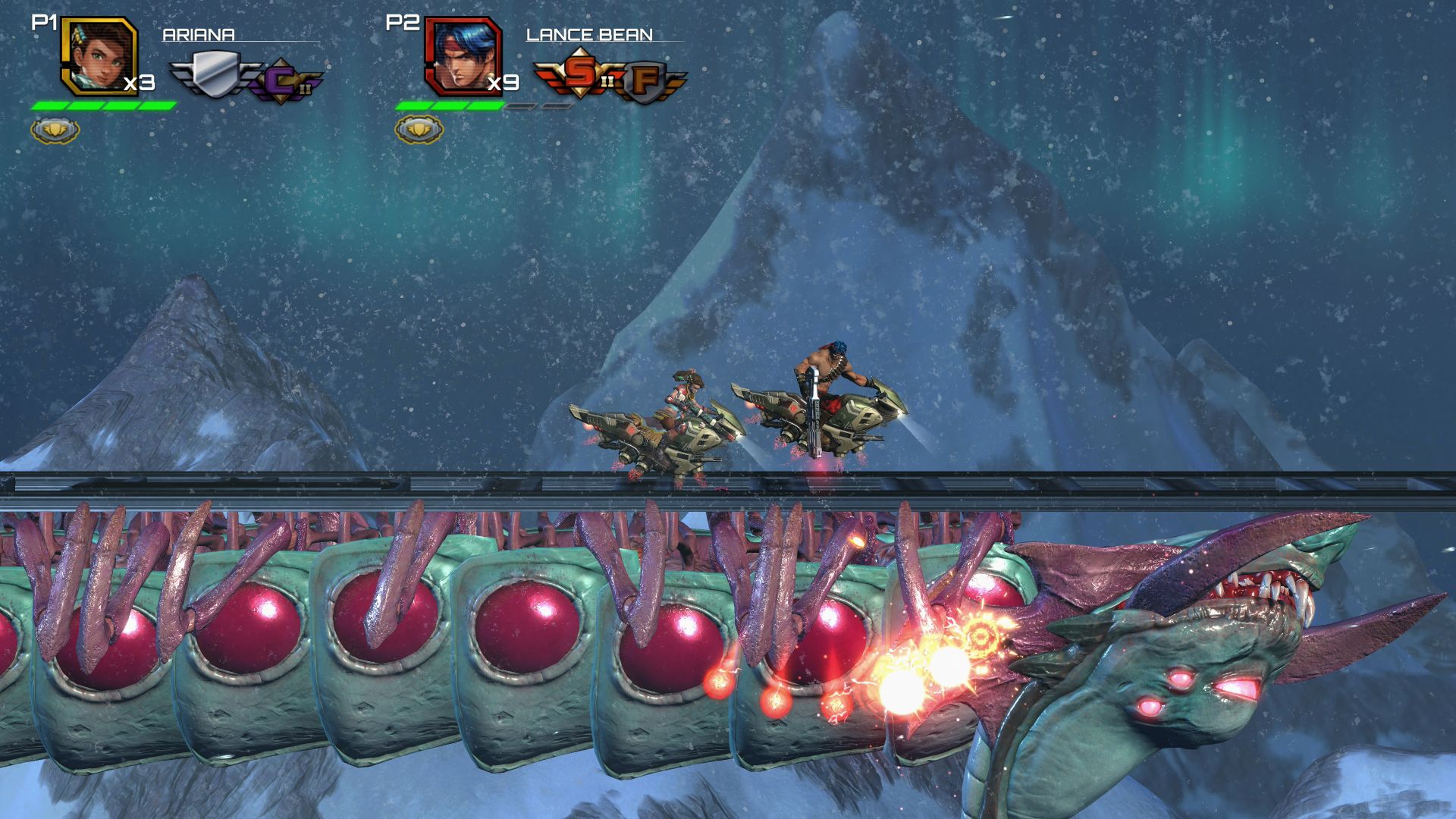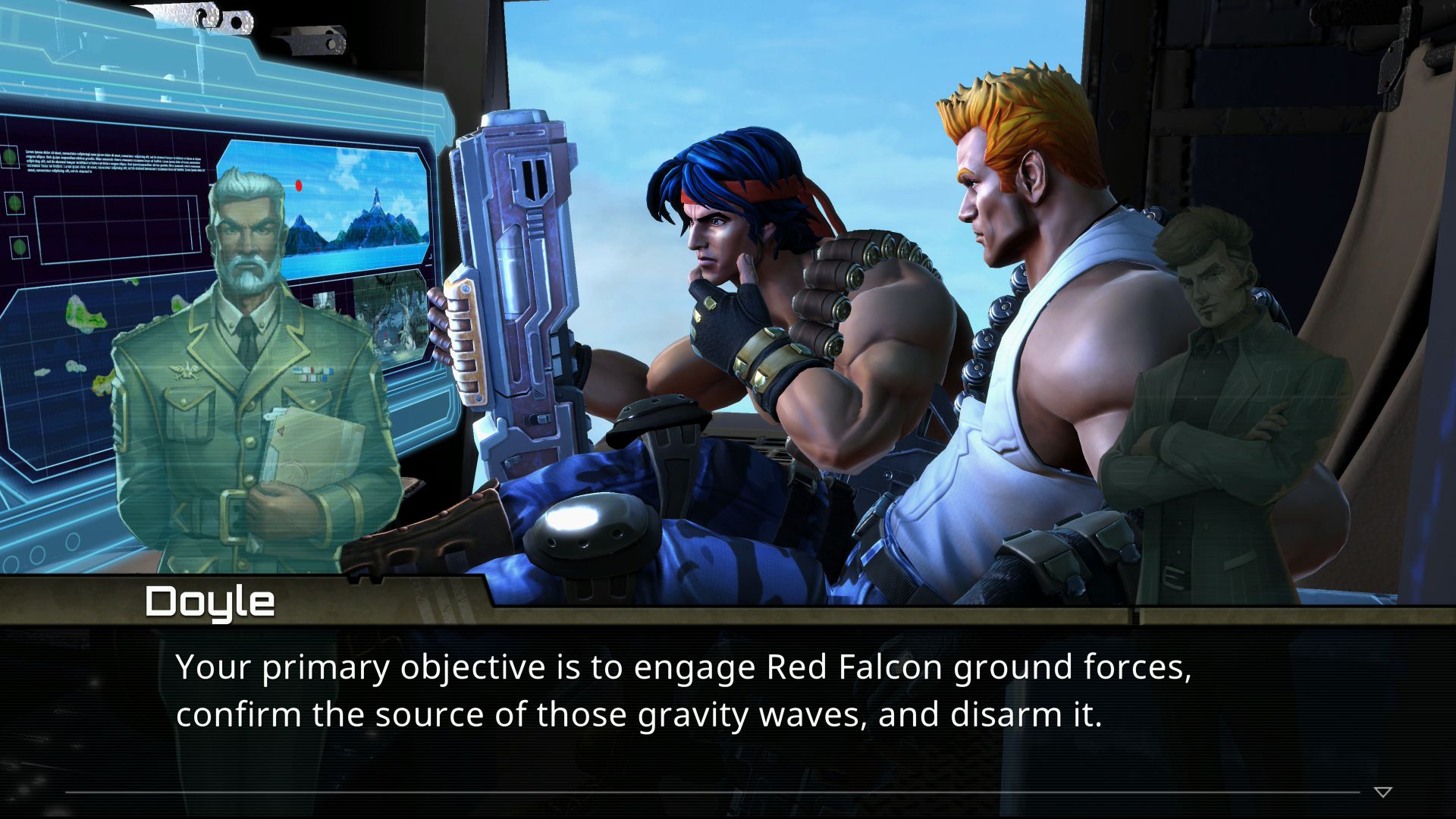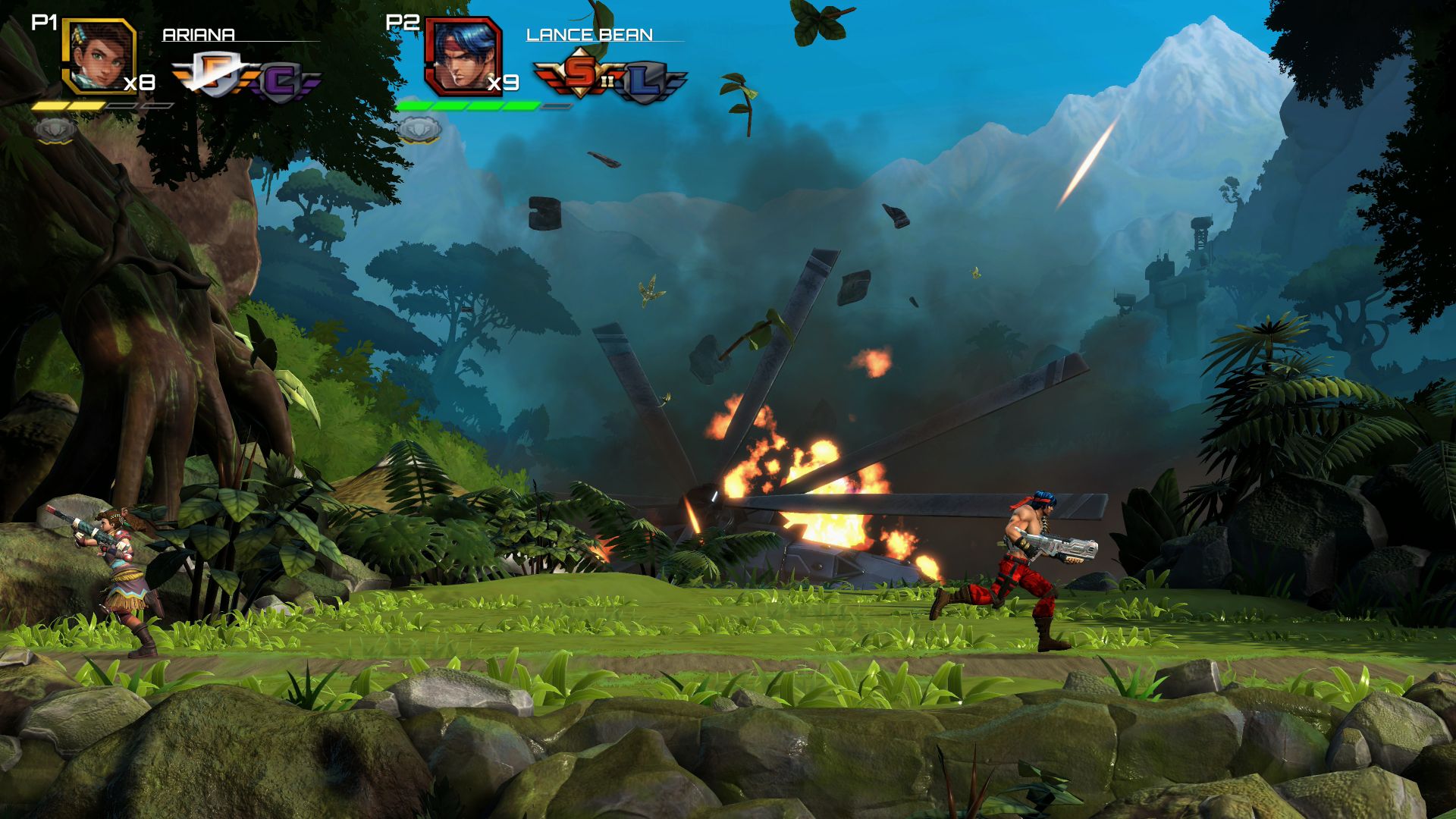

The Contra series of run-and-gun shooters has persisted since the debut of the original arcade game in 1986. Naturally, this includes some ups and downs, with 2019’s Contra: Rogue Corps recently failing to win over critics and fans. This led some to question whether Contra: Operation Galuga, developed by WayForward and published by Konami, would be a return to form. With Tomm Hulett as director and a seemingly substantial budget for a 2.5D game, Operation Galuga certainly qualifies as an “up.” In fact, it’s one of the best games in the series.
While Operation Galuga initially looked like a remake of the original Contra, it has turned out to be a “rebootquel” instead. This one retells the story of the first game with much greater fidelity, borrowing environments and gameplay elements. At the same time, however, it’s really a brand-new game. The levels are totally different, lots of new characters and mechanics are present, and any returning bosses behave much differently than they did before. Thus, Operation Galuga is an excellent entry point for new players while also being a brand-new, faithful sequel for gamers who grew up playing the 2D Contras.

Operation Galuga offers three game modes: Story, Arcade, and Challenge. Story mode, which supports 2-player local co-op, is where players will probably want to start, especially since Story progress is required to unlock some content in Challenge mode and the Perks shop.
Story mode opens with a 3D introduction that depicts the arrival of Red Falcon’s forces on the island of Galuga, followed by the subsequent entrance of the Contra team. While some of the characters are depicted as 2D portraits, they’re all fully voiced by high-quality actors like Steve Blum. Most of the cinematics have good-looking in-engine 3D components to them as well, so they don’t come across as low budget (until the ending). Between the action segments of each stage, Bill Rizer and Lance Bean, the series’ iconic pair of heroes, will interact with other members of their team, a handful of friendly NPCs, and some talkative but less welcoming representatives of Red Falcon. The narrative doesn’t include much in the way of characterization, but it’s interesting enough and lays some groundwork for future titles. Regrettably, the actual ending is told through a motion comic rather than the in-game engine used for every other cinematic. It feels out of place and looks cheap despite the exciting events depicted within.

Arcade mode features the same 8 stages as Story but without the cinematics, and levels must be played in a linear fashion. At least one moment plays oddly without the presence of the narrative: the helicopter crash in Stage 1. The screen stops scrolling, and the protagonists just stand around waiting for the crash; it’s a slower moment than you’d find in the 16-bit games. Still, overall, Arcade mode offers a faster pace than Story mode, and it will surely be where players spend most of their subsequent playthroughs after clearing Story mode. Arcade also ups the co-op player count to 4 players and supports the alternate unlockable soundtracks, further encouraging replay.
Initially, only Bill and Lance are playable in Story mode, whereas Arcade also offers a pair of Probotectors (androids created for the European localizations of the original Contra games) to choose from. After clearing Story, a total of six additional characters will unlock or become available to unlock in the Perk shop. The four starting characters all share the same two abilities (double jump and dash), but the additional characters have unique powers like charge shots and grappling hooks. Basically, gamers can play it safe with the starting cast (as I prefer to do) or mix things up with the remaining warriors.
One of Operation Galuga’s best qualities is that it really nails the gameplay of the classic Contras. Running, gunning, and crouching all feel exactly as they should. Locking in place to aim is present, thankfully, even when riding hoverbikes (an improvement over Contra III). Players can still carry and switch between two weapons, though Contra III’s ability to spin while firing both weapons at once didn’t make the cut here.
The weapons system resembles that of past games but with some welcome upgrades. Weapons pods still fly across the screen at specific locations and drop weapons when shot. Players can now earn and store a spare weapon pod for emergencies – an improvement over the undercooked pod system in WayForward’s previous run-and-gun, Spidersaurs. Like that game, collecting two copies of a weapon will upgrade that weapon, and getting hit will cause the weapon to revert to Level 1 status. Unique to Operation Galuga, players can forego a weapon’s Level 2 status to perform an Overload, a weapon-specific special move. You’ll probably want to keep weapons at Level 2 most of the time, but whenever a duplicate of an upgraded weapon comes along, that’s a great time to use the Overload before collecting the duplicate.
Operation Galuga’s gameplay deftly marries classic and new elements, and the same applies to the levels and bosses as well. Most of the 8 stages take place in environments from the original game such as the jungle, a Red Falcon base, and an alien hive. The levels here are much longer, though, with completely different layouts. Some players might feel that the levels are a bit too long, in fact. Still, a single playthrough can be completed in under an hour, so the game’s far from bloated. While the base invasion stages of the original Contra are absent, they’ve been replaced with a pair of exciting hoverbike stages. The bosses primarily consist of fresh interpretations of classic bosses from the original game, and even one from Contra III. Fighting them is a blast, and most of them telegraph their attacks quite fairly. The last stage and final boss are truly intense and thrilling, a fitting climax to an epic adventure.
Difficulty has sometimes been an issue in the Contra series. The NES game started out being quite manageable thanks to the Konami code, but some otherwise great entries like Hard Corps Uprising and Contra 4 have been too tough for their own good. As the director explained in our developer interview, however, Operation Galuga is designed to accommodate beginner and expert players alike. Not only are there three selectable difficulty levels with NO difficulty-specific Achievements, but players can choose between having a life meter (like some of the Japanese Contras) or 1-hit kills. Three hits and the stock number of lives might not be sufficient for weaker players, but that’s where the perks system comes in.
At the start of a Story or Arcade mode game, each player can choose two perks from the ones they’ve unlocked. These allow for customizing the experience in numerous ways such as adding extra health or lives, making weapons retain their level when the player gets hit, and many more. Unlocking perks is the metagame that will keep players coming back for countless playthroughs. Playing levels and completing challenges rewards you with credits, and those credits can then be spent to unlock perks, new characters, and alternate soundtracks from the Perks Shop. Some perks are super expensive, so grinding will be required to unlock the full assortment.
Contra games typically shine in co-op, and Operation Galuga is no different. Whether playing Story or Arcade, each player gets to select their own character and perks, instilling a sense of freedom from the outset. While a fresh save file will offer few if any perks for difficulty management, the primary player can certainly spend a little time unlocking perks solo in order to ease in a weaker co-op partner. Co-op partners who have run out of lives can steal lives from surviving players, just like in the good old days. Managing who gets weapons when they appear can take some fast acting because said weapons will disappear after a few seconds, but the team should develop a rhythm before too long. The game gets chaotic when more than two players come along, but WayForward has done an excellent job with the visibility of enemy projectiles. The only co-op feature we could really wish for would be online co-op, a feature that shoot ‘em up developers typically resist.
Another thing that extends replay value here is the single-player Challenge mode. By completing the game and unlocking all characters, a total of 30 challenges will become available. Challenges take place in specific parts of levels, assigning a character and weapon with no perks or aids. Goals consist of things like killing specific enemies, clearing an area within a set time, and even defeating bosses with a fixed quantity of ammo. Clearing a challenge at all gets you a credits reward, and clearing it within the par time bestows a gold trophy and larger reward. Challenges require a lot of trial and error, and some of them might be beyond a player’s abilities, but I love the bite-sized experiences they add to the game.
Updating a classic game for the modern era is tough to get right, as evidenced by nearly all of the 3D games in the Contra series. Contra: Operation Galuga really knocks it out of the park, thankfully. WayForward really understands how these games should feel and what makes them fun. This one has been given the time and budget to really tighten the gameplay and deliver an impressive presentation (ending aside). Operation Galuga might not be the technical marvel that the Super NES and Genesis games were for their time, but it’s still the best Contra since those days and one of the finest games in the run-and-gun shooter genre.
Contra: Operation Galuga sells for $39.99 on Xbox, PlayStation, Switch, and Steam. The Steam version is fully Steam Deck compatible. Preorders are open for physical editions from Limited Run Games through April 14.
Xbox and Steam download codes were provided by the publisher for this review.